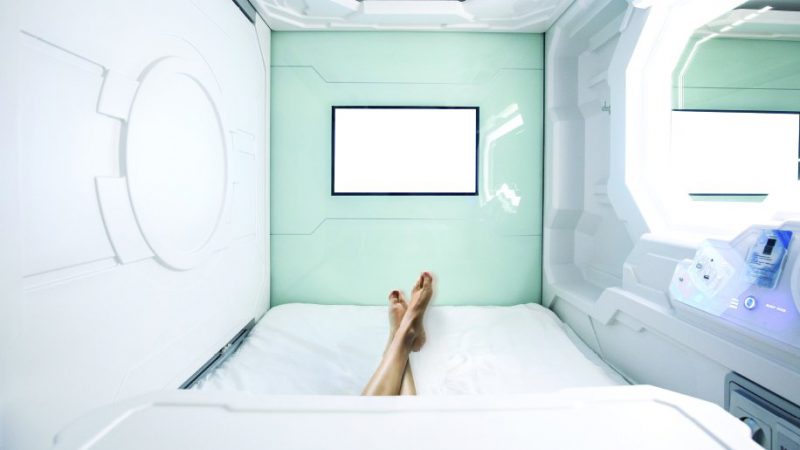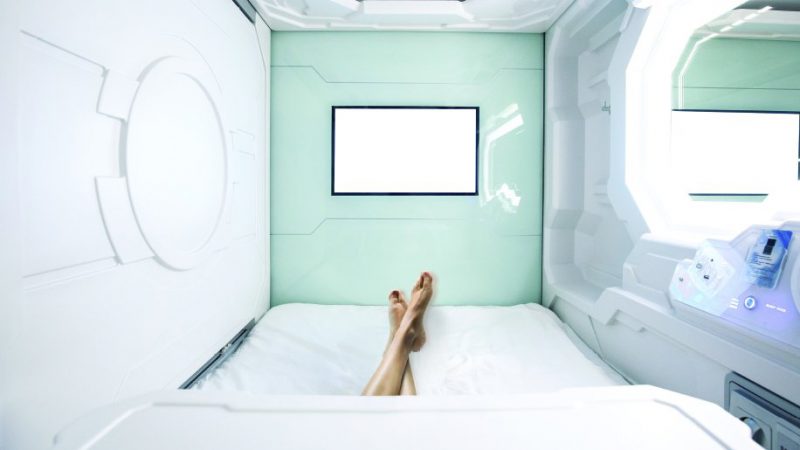Capsule Collection
Forty years after the first one appeared, the small but perfectly formed pod hotel is becoming more popular
March 30, 2019


Originating from the megalopolis of 1970s Greater Tokyo, non-descript pod hotels were created to provide affordable refuge for exhausted salarymen on the frontline of the post-war Japanese economic boom. These compact capsules, often stacked one on top of the other, offered stripped-back accommodation for the traveler – a bed and the bare (but comfortable) necessities for rest, such as a reading light, storage space and access to bathroom facilities.
The first example was the Capsule Inn in Osaka, which opened in 1979 for men only. Designed by the influential Japanese architect Kisho Kurokawa, it offered overnight accommodation to guests who did not require the trappings of a traditional hotel. Often cheaper than the long bullet train ride to homes in the suburbs, they were used by commuters as a place to crash.
The design of the first pod hotels stemmed from the Metabolism movement. These extraordinary sci-fi style buildings of the early 70s – perhaps best showcased by Tokyo’s Nakagin Capsule Tower – demonstrated the potential of this type of architecture. Consisting of 140 capsule apartments, the building was designed by Kurokawa and erected in just over 30 days.
Kurokawa believed that the buildings of the emerging Japanese megacities, which rose out of the devastation caused by aerial bombing in the Second World War, required flexible, adaptable designs that could evolve as cities expanded. This approach was particularly suited to the rapid building that took place after the war in Japan. Architecture needed to adapt to a modern post-industrialized world and the changing nature of society.
With an ever-greater premium on space in cities throughout the world, an expanding business travel market and more tourists looking for no-frills accommodation in a world of economic uncertainty, the market for pod hotels is growing, particularly in Europe and the Far East. Small wonder – prices hover at around $60 a night, and they provide a reliably uniform experience with WiFi, somewhere to charge gadgets, washing facilities and workspace.
The concept is outgrowing its humble origins, with luxury options now offering more creature comforts within a smaller footprint than your average hotel room. While many are still practically located near transport hubs, such as airports and railway stations, these glamorous cousins can also be found in more bucolic destinations, twisting the concept by veering away from the cheek-by-jowl set-up into single structures in dramatic natural settings.
Our top five pod hotels highlight the growing diversity of this diminutive style of accommodation.
1. Nine Hours, Kyoto
Opened at the end of 2009, this is the brainchild of Fumie Shibata and her Design Studio S. Today the chain has branches in ten cities across Japan and is perfectly suited to both business travelers and backpackers on a budget. The Nine Hours Kyoto branch has a spaceship-like design of clean lines and calm spaces in a monochrome palette and is located within walking distance of Kawaramachi train station and Kyoto’s renowned Yasaka shrine. The hotel has separate floors for men and women, and each custom-designed capsule includes an alarm clock that wakes you through the use of light rather than sound; specialized pillows designed to maximize the space available; and high-quality Japanese woven linen sheets for comfort. From ¥4,900 ($44); ninehours.co.jp
2. Galaxy Pod Hostel, Reykjavik
Located in central Reykjavik, the Galaxy Pod Hostel opened in 2015, offering 42 sleeping capsules in a bright and futuristic space inspired by Tokyo’s pod hotels. The open-plan lobby has striking views across the mountains, while pods are decorated in a minimal black-and-white color palette with a comfortable mattress, reading light, mirror and shelf, television, light alarm clock and separate storage locker. Guests can use a self-service kitchen, while the hostel’s location on Laugavegur, the city’s main street, ensures you aren’t far from plentiful restaurants and bars, as well as the downtown business hub. Pods from ISK6,850 ($57); galaxypodhostel.is
3. Yotel Gatwick Airport
Conveniently located within the South Terminal building of Gatwick airport, and with 24-hour access, this accommodation is a boon for weary travelers, with simple, effective cabins in standard and premium categories, bookable by the hour. All rooms have desks, rain showers and free WiFi, while premium cabins work the 100-square-foot space hard, featuring an adjustable bed that can also be used as a sofa. Yotel has sister hotels at Heathrow inside Terminal 4, Amsterdam’s Schiphol airport and Paris Charles de Gaulle. From £130 ($171); yotel.com
4. St Christopher’s At The Village, London
London’s first pod hostel opened in February 2018, providing basic accommodation on Borough High Street, just a short walk from London Bridge and Borough tube stations. The 26 Japanese-style capsules have plug sockets, USB ports and mood lighting, with a heavy curtain providing privacy, and lockers for secure storage. Bathrooms are minimalist with wall-mounted hairdryers.From £29.80 ($40); st-christophers.co.uk
5. PurePods, South Island, New Zealand
These freestanding glass pods offer an immersive experience of nature in six locations, all within two hours’ drive of Christchurch, including the Kaikoura mountain range and Banks Peninsula. Each self-contained retreat has been designed to minimize its impact on the environment using solar power, filtered rainwater and natural waste composting. There is glazing throughout – even bathrooms have a glass floor, walls and roof. Stargazers can revel in the clear night skies of the Southern Hemisphere, where light pollution is virtually non-existent. From NZ$590 ($405); purepods.com




